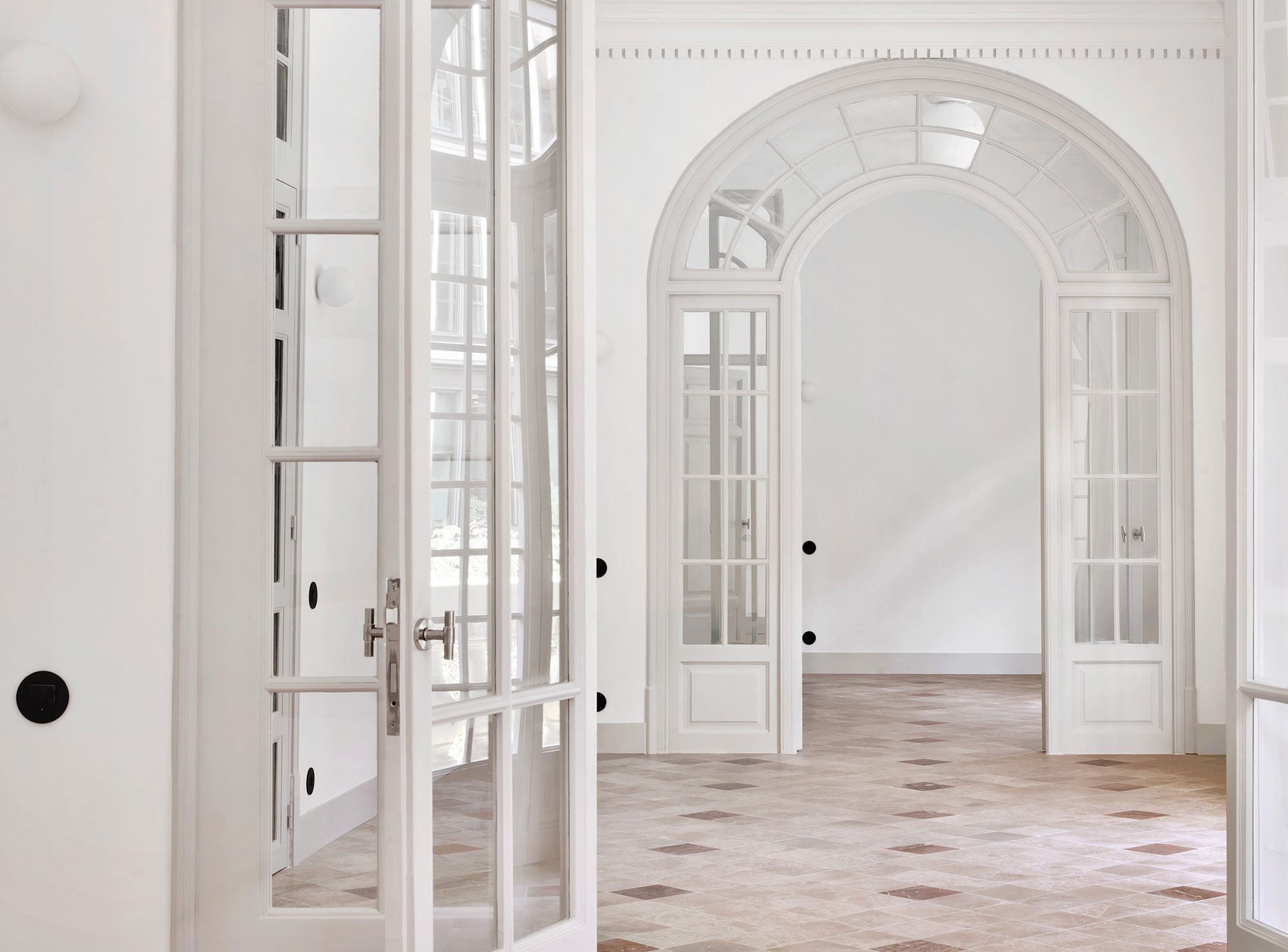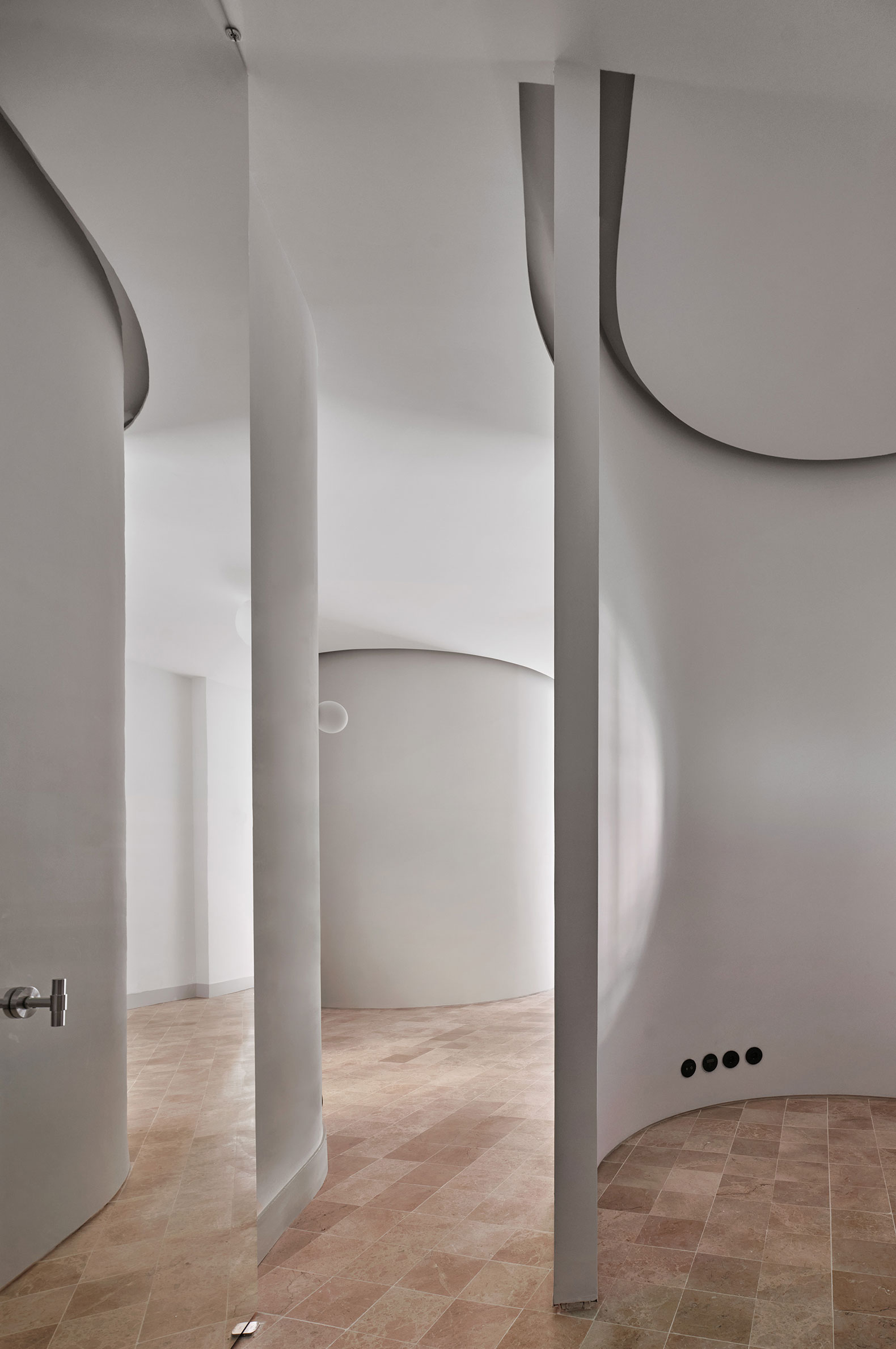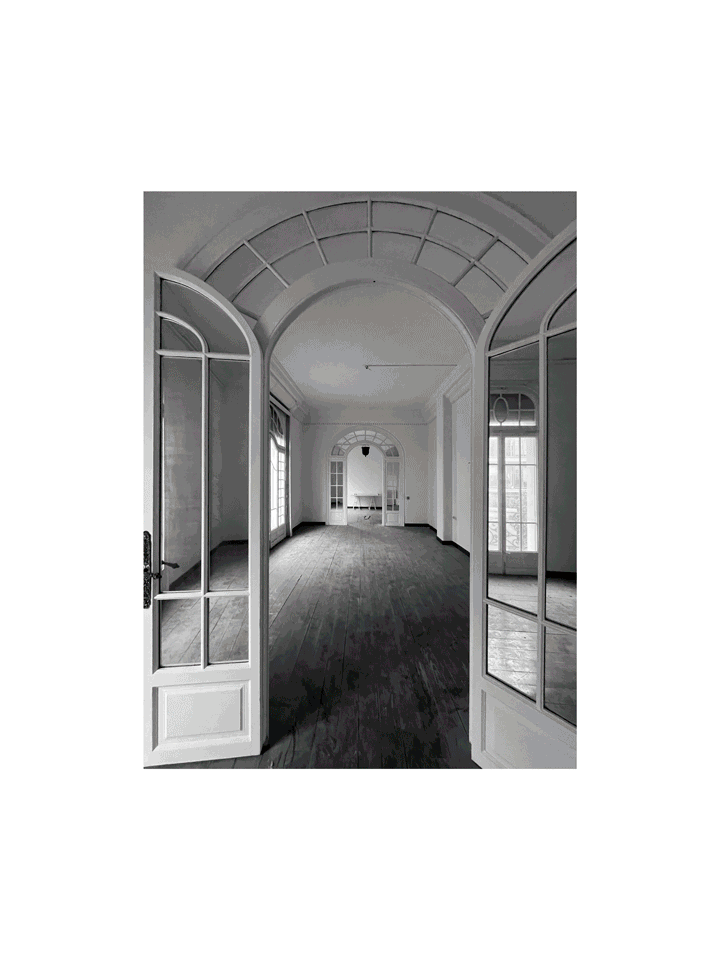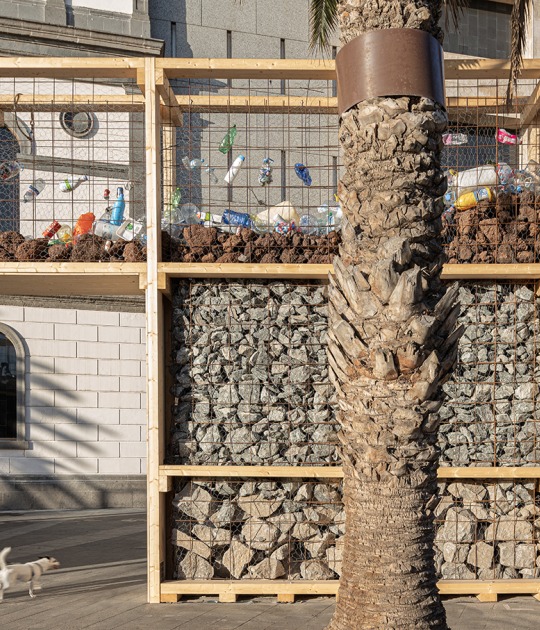The new use produced a change in the distribution that is achieved thanks to two walls of curved geometry inspired by the oval atrium of the building, where doors with mirrors are located at the end of each one to expand the perception of space. Furthermore, with the new layout, the floor plan can be divided into two parts, one connected to the façade and the other connected to the atrium.
The project gains interest thanks to the meticulous restoration work that was carried out on the original elements. A new natural stone was used as the flooring for the entire floor, reproducing what reminds us of the original flooring while generating a contrast of tones with the restored elements.

Office space in the Mas de Miquel building by Metronom arquitectura. Photograph by Jose Hevia.
Project description by Metronom arquitectura
Renovation and transformation into office space, of a floor in the historic Mas de Miquel building
The Mas de Miquel building, a historic style building on Diagonal street. It has the first structure in the city with a reinforced concrete framework, and with pioneering features such as central heating, a centralized vacuum system and the functional segregation of elevators and stairs. Built in 1929, the building was designed by Domènec Sugrañes, a disciple of Antoni Gaudí. A 9-level high, fully decorated atrium provides entrance to all apartments. Some say that the architect was inspired by the Casa Milà designed by his mentor, Gaudí, while others claim that it was Mr. Miquel who fell in love with a similar atrium in a spa.
The previous layout of the apartment featured pronounced segregation between common areas and domestic service areas, including a loft that halved the height of the service areas. Even though most of the noble rooms were connected and linked to the façade, they lacked independent access from the hallway. The assignment was to transform the apartment from residential to office space. Sufficient flexibility was also requested so that the space could be used for purposes other than offices, such as showrooms, small clinics or even as a residence again. The transformation aimed to highlight the noble character of the main rooms, which are connected through glass doors, the Noucentista style.

Office space in the Mas de Miquel building by Metronom arquitectura. Photograph by Jose Hevia.
All the craftsmanship of the original elements has been meticulously restored, including the moldings and wood doors. These were carefully dismantled and reinstalled in their original positions. A new local natural stone is used as the flooring for the entire floor, reproducing the layout of the original hydraulic flooring, which was damaged and partially lost during successive partial renovations.
On the other hand, a new access and distribution system has been introduced to organize more fluid functionality and create new cross-perspectives. This is achieved through two walls of curved geometry inspired by the building's oval atrium. At the end of each curve, tall mirrored doors are introduced to expand the aseptic perception of this area. This contrasts with the Noucentista rooms on the façade and serves as a transition from the atrium to these rooms. Now, all rooms have independent access from this distributor space, improving the flexibility and adaptability of the apartment.

Historical Photographs. Office space in the Mas de Miquel building by Metronom arquitectura.





















































